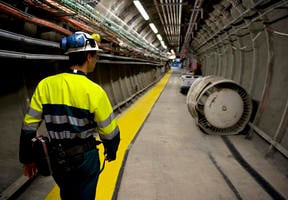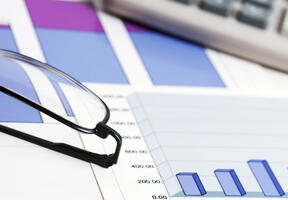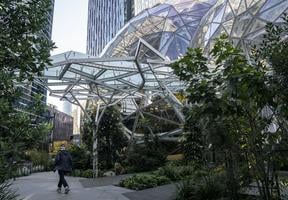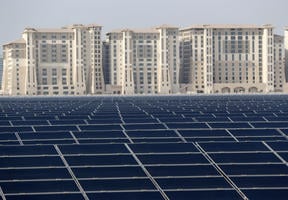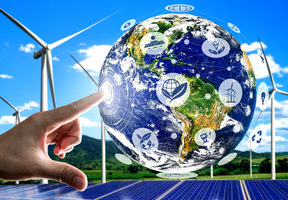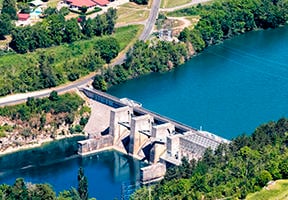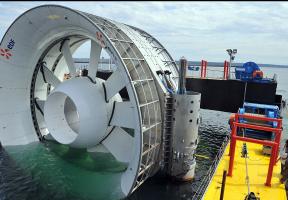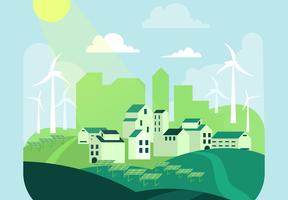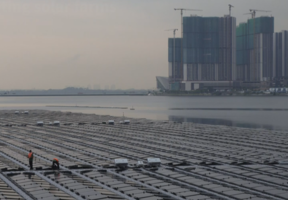Energy Efficiency: An Energy Source in its Own Right
Published on 04.12.201610 min read
One of the key objectives of the European Energy Union project launched by the European Commission is to reduce energy demand. According to European experts, energy not used should be considered an energy source in its own right.
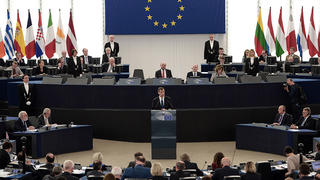
© AFP / FREDERICK FLORIN - The European Parliament is calling on Member States and the European Commission to revise their energy savings targets upwards.
In 2008, the European Union (EU) adopted the climate and energy package, a set of three energy goals, known as "3 x 20", to be achieved by Member States by 2020.
The package defined two legally binding targets at the EU and Member State level:
- to cut greenhouse gas emissions (GHG) to 20% below 1990 levels.
- to increase the share of sources to 20% of the European .
An indicative target is to improve by 20%, compared to consumption projections for 2020 (if conditions remain unchanged).
In 2014, in the lead-up to the COP21 climate conference of December 2015, EU leaders set new energy goals for 2030.
The new framework includes two legally binding targets:
- to cut GHG emissions to at least 40% below 1990 levels.
- to increase the share of renewable energy sources to 27% of the European energy mix.
An indicative target is to improve energy efficiency by at least 27%, compared to consumption projections for 2030 (if conditions remain unchanged).
The European Commission had originally proposed 30% energy efficiency and renewable energy targets, but heads of state and government – who have the final say in the matter – lowered them to 27%, due to the reluctance of various EU countries to face stricter requirements. They did accept, however, to review the energy efficiency target in 2020, with the intention of raising it to 30%.
Improved Energy Efficiency Means Lower Consumption
When European experts develop different scenarios and talk about "improving energy efficiency", it's important to bear in mind that what they really mean is "reducing energy use". Energy efficiency isn't a clear-cut concept. Sometimes, efficiency gains are canceled by new consumption trends. An often-cited example is that of household appliances. While certain devices have become more efficient over the years, they also have become bigger and more powerful.
The Energy Union project rightly stresses the need to "fundamentally rethink energy efficiency and treat it as an energy source in its own right, representing the value of energy saved". The European Commission already assesses Member State progress towards achieving the 2020 energy goals by measuring their gross inland consumption of energy1.
Based on this indicator, Europe still has a long way to go. To meet the 20% energy efficiency target, the EU's 2020 energy consumption must not be more than 1,474 Mtoe. According to the latest Commission forecasts however, Member States will fall short of the initial target and achieve energy savings of just 17.6%.
Pressure to Review Targets
To remedy the situation, the European Parliament is calling on Member States to revise their energy savings targets upwards. Consequently, the Commission is planning to prepare energy efficiency scenarios for 2030 with energy reductions of 35% and 40%, i.e. well beyond the 27% objective. Although these are just studies, the preparation of a measure's cost and benefit estimates is often the first step in drafting EU legislation.
The Commission's Joint Research Centre (JRC)2 has already published a report comparing energy efficiency scenarios for 2030 using energy reductions of 27%, 30% and 40%. The study shows that with a 40% target, the sum of energy savings and renewable output would exceed the sum of energy from fossil fuels imported by the EU. According to this theoretical calculation, the 40% target would lead to an improvement in the EU's , GHG savings and economic competitiveness. It is the only one that would allow the EU to reach the objectives of the Paris Agreement adopted at COP21.
JRC scientists have recommended putting in place various measures to promote investment in energy efficiency. One of the main focuses is the building industry. Construction is the most sector (currently responsible for about 40% of energy consumption in the EU) and the one where non-compliance is the most severe (all Member States are delaying implementation of the EU directive and, since July 2014, the Commission has issued 28 infringement notices). In fall 2016, the EU plans to review both the Energy Performance of Buildings Directive and the Energy Efficiency Directive.
Sources :


